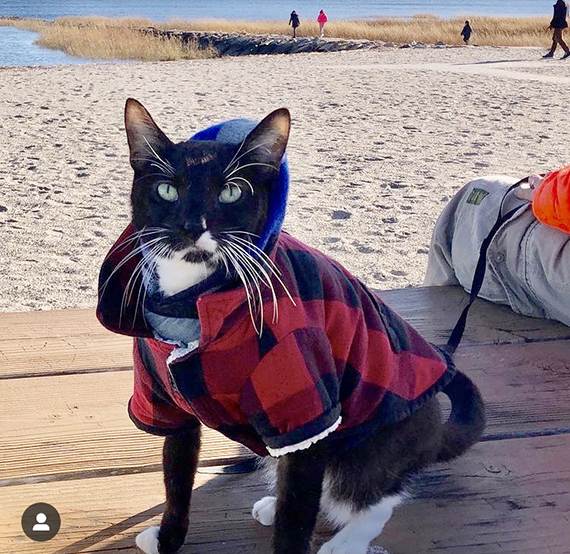Staying Fit
When Janet Chan and her wife, Suzanne Cohen, showed up at a brewery with their leashed cat, Sushi, along with three friends and their cats, “People were freaking out,” says Chan.
Before COVID-19 shut down social gatherings, the Westchester, New York-based couple would regularly take outings with Sushi and fellow feline adventure enthusiasts.


AARP Membership— $12 for your first year when you sign up for Automatic Renewal
Get instant access to members-only products and hundreds of discounts, a free second membership, and a subscription to AARP the Magazine.
Chan, 59, and Cohen, 55, have been kayaking with a group of five cats and four humans in Newtown, Connecticut. They've hosted a Central Park meetup with more than 30 harnessed house cats. Wherever they go, they attract a lot of attention.
"I know what Justin Bieber's mom must've felt like,” says Cohen, of what she calls the “caterrazi'’ who stop to chat and snap photos. “Most people are amazed and excited."


More than 42 million American households contain a cat, and as people are quarantined at home, they're looking for new and interesting ways to interact with their pets.
Cats naturally want to go outside, but it can be unsafe with predators, cars and other dangers lurking. To bridge the gap between enrichment and protection, an increasing number of cat owners are training their cats to take a leash — typically by using a specialized cat harness that fits over the front legs and the chest.
Getting a cat used to a harness and leash may also be beneficial for travel, if owners are asked to take their pet out of a carrier. Last year, a cat escaped from a TSA checkpoint at LaGuardia Airport after being removed from her carrier. The cat, Muji, was discovered 11 days later hiding in the airport ceiling.
Find the right harness
While leash-training may make some cats happier and healthier, others may object. A bold, social cat like Sushi, who greets strangers at the door, is more likely to enjoy time outdoors than a timid cat who hides under the bed when visitors are in the home.
Getting a cat used to leash-time requires the right equipment and gradual exposure at home.
There are two kinds of harnesses for cats. The thinner and lighter figure-eight style harness that loops around a feline's necks and shoulders may be a good starting point for getting a cat accustomed to something on its body. However, these types of harnesses are far less secure than the wider, vest-style versions that tightly Velcro around the back and chest.
Similar to dogs, cats have a floating collarbone, which allows them to push their entire body through any space wide enough for their head. That means no feline harness is 100 percent escape-proof, so take precautions if you have a cat that might try to wriggle free.




































































